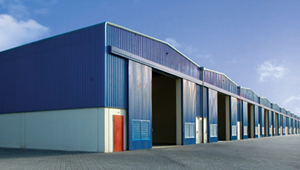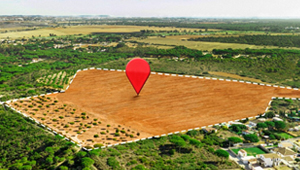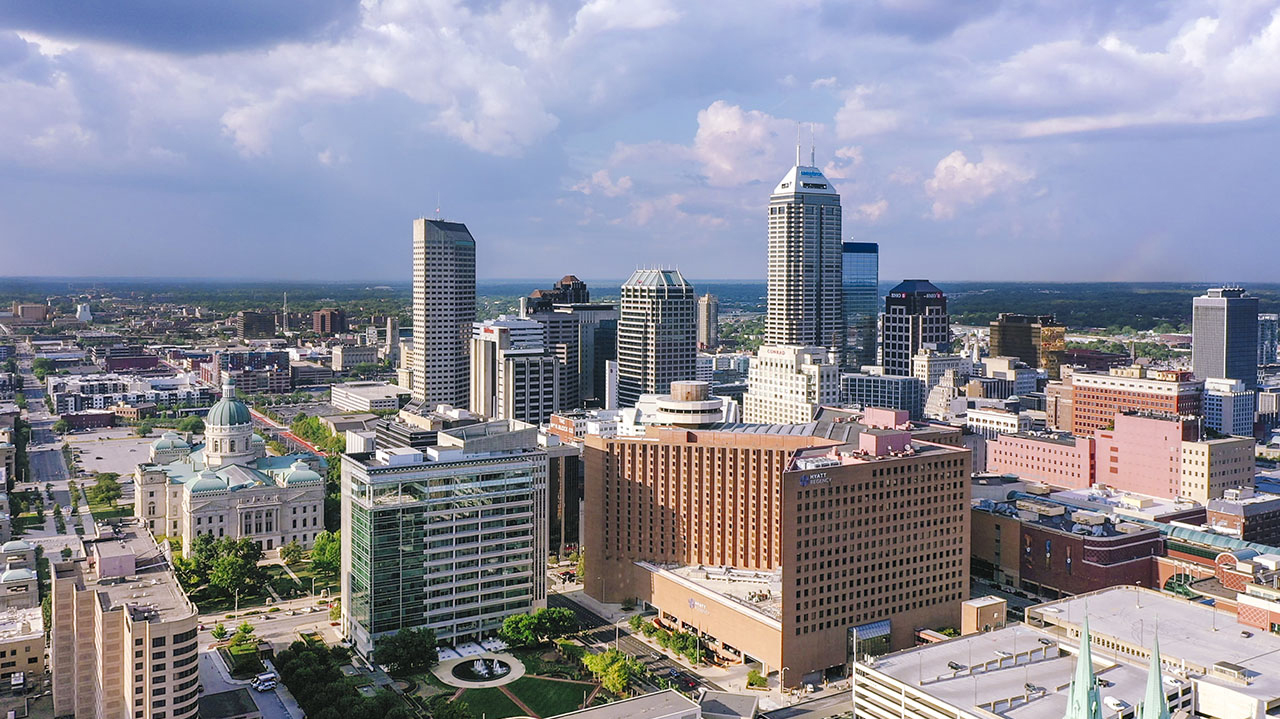Top Commercial Real Estate (CRE) Trends to Watch in 2024

Introduction
Every commercial real estate investment affects the world even though the investors’ intentions are only for their financial advantages. According to all commercial property advisors, commercial property prices appreciate over time. Even after higher interest rates, many investors are turning to real estate to generate income and capitalize on the potential for appreciation. This is why the investors committed to maintaining a steady, reliable, and profitable portfolio keep commercial properties at the top of their lists. The industry constantly evolves with frequent new trends and advancements; for example, the demand for sustainability leads to the development of more energy-efficient and environment-friendly buildings. Also, the rise of e-commerce has led to increased demand for warehouse and warehouse distribution center space. The global pandemic has affected all economic sectors, including CRE. Following the pandemic, inflation and rising interest rates are also causing the industry to adapt to new patterns. Commercial real estate is responding to trends that go beyond traditional investment. Savvy investors try to understand the consequences that are coming ahead, like how co-working and flexible office space are becoming mainstream or the widespread adoption of AI in the management and operation of commercial properties. They arm and equip themselves to embrace the changes in the market. As we look forward, several significant CRE trends and turning points will shape the outlook for 2024. Let’s dive into some of those ongoing trends.
Growth of E-Commerce and increasing Demand For Warehouses
The growth of e-commerce, which is anticipated to continue to be a titan in the sector, is one of the most apparent commercial real estate market trends to watch in 2024. There is a huge demand for warehouse space for lease. People tended to shop online more throughout the pandemic. Even in the post-pandemic period, the e-commerce business has continued to thrive. From U.S. Census Bureau News released in February 2023, we get to know that less than 20% of retail purchases are made through e-commerce, which reached a peak of 20% during the first nationwide lockdown, a sharp increase from the 13% seen in 2019 (excluding transactions associated to automobiles). So, there is still space for expansion. This trend is already in motion with many e-commerce behemoths, including Amazon, buying up sizable warehouses and distribution hubs nationwide. This trend is an ample opportunity for warehouse investors, but retail investors may be affected due to having as much demand as the pre-pandemic period. They should think of innovating their properties and taking adaptive measures to use them for other purposes.
Adaptive Reuse of Commercial Buildings
Another major trend in 2024 will be the adaptive reuse of existing commercial properties. This trend can be reusing existing buildings for a different use while preserving as much of the original structure as possible. This trend has recently gained popularity due to the need for more effective and affordable development strategies. Studies show that adaptive reuse and restoration can result in 16 percent lower construction costs and 18 percent quicker project completion time when compared to new development. If adaptive reuse is carried out wisely, it can increase commercial property prices and its functionality. The growing trend towards urbanization is leading to the development of mixed-use projects in city centers; for example, The Highland Mall in Austin, Texas, and Cinderella City Mall in Englewood, Colorado, are two excellent examples of such creative reuse that have not only effectively met a community need but also contributed to the growth of the local economy.
A Shift Toward Affordable Multi-Housing
The trend toward affordable housing in the multi-housing industry reflects the growing need for accessible housing options in many communities. Multi-housing, or multi-family housing, refers to residential properties that house multiple families or individuals in separate units within the same building or complex. This includes apartments, condominiums, townhouses, and other forms of shared housing. Housing affordability will remain a pressing issue in 2024. However, there is no easy solution to this problem. Many cities and towns are facing a shortage of inexpensive housing options, and the increasing cost of housing has made it difficult for many people to find a place to live that they can afford. As a result, there is a high demand for affordable and workforce housing (for low- to moderate-income workers, such as teachers, nurses, firefighters, police officers, and other essential workers), but the supply is limited. Policy options to address this issue include reducing the challenges associated with house construction, minimizing regulatory expenses, and updating building regulations. To increase the availability of reasonably priced housing, developers, investors, and other stakeholders in the multi-housing industry are exploring strategies such as public-private partnerships and tax incentives. Some cities have also implemented rent control and other policies to lower the cost of housing.
High demand for Coworking Spaces
Coworking space is now a growing trend in the industry. “Coworking space” refers to shared office spaces rented to several tenants to share resources, services, and other amenities. These spaces are becoming more and more attractive because of their affordability, convenience, versatility, and collaborative atmosphere. Coworking spaces provide an excellent option for startups, entrepreneurs, freelancers, and small businesses that don’t need large office spaces. There is an increasing need for office space that is adaptable enough to support a variety of work types as more people choose to work remotely or on flexible schedules. According to CBRE data, due to the impact of the pandemic and employees’ increasing interest in a hybrid model, the highest annual coworking growth is clustered in prominent cities like Phoenix, Las Vegas, Miami, and Atlanta. To address the increasing demand, coworking business players are forging strategic alliances. A major coworking space provider partnered with a flexible workspace network to establish a presence in over 5,500 locations across 80 countries. Meanwhile, another provider expanded its footprint by adding 20,000 square feet in Mesa, Arizona. Industry experts predict that coworking spaces will keep expanding and outpacing traditional office environments over time.
Stay ahead of the market—discover tailored investment insights.
Schedule a Discovery CallMixed-Use Development & Alternative Property Ownership
The demand for urban living is growing increasingly, and there is a demand for more effective and affordable development alternatives. Mixed-use construction is one of the critical solutions to this rising demand and affordability issue. Properties with a mix of residential and commercial purposes are termed “mixed-use development,” an emerging trend to watch in 2024. Several benefits come from mixed-use development. Mixed-use developments often include uniform architecture and design, common entrances, lobbies and common spaces, driveways, elevators, and on-site features like cafes, salons, gyms, etc., to support all users inside the property.
Moreover, lifestyle retail, play areas, child care, and many other components are strategically arranged to benefit residents, visitors, and professional renters. It can make the urban environment more dynamic and vibrant, allowing people of all economic levels greater housing options. Additionally, it can help increase commercial property prices, economic activity, and new employment opportunities. The alternative property ownership model is another thing that’s becoming popular. Real estate investment trusts (REITs) and crowdfunding platforms are becoming increasingly popular as alternative ways to invest in industrial real estate. REITs allow investors to buy shares in a company that owns and manages a portfolio of properties, while crowdfunding platforms allow investors to buy small stakes in individual properties.
Sustainability, Credits & Incentives
Sustainability is becoming increasingly essential in every industry. Increased public knowledge about environmental consequences, the massive potential impacts of unchecked climate policies, the lack of financial and regulatory incentives for sustainability efforts, etc., have motivated the green initiative trend. A significant portion (approximately one-third of global greenhouse gas emissions) of greenhouse gas emissions are caused by the property sector. The Inflation Reduction Act of 2022 includes climate-related measures to lower greenhouse gas emissions. The Bipartisan Infrastructure Law includes major initiatives primarily aimed at enhancing the resilience of physical and ecological systems. CRE stakeholders like investors and developers have considered sustainability initiatives in their projects. For instance, they employ recycled and reusable building materials, implement energy-efficient techniques, and utilize renewable energy sources. Some cities are mandating specific ESG (Environmental, Social, and Governance) criteria for new cost-saving green constructions, like LEED certification. Investors also consider sustainability factors in their investment decisions, emphasizing long-term performance and market gains. Governments and other institutions sometimes provide credits and incentives that can be used to offset some of the project costs for CRE. When businesses are recovering from the pandemic, credits and incentives are supposed to be even more crucial. Incentives may come in tax credits, grants, commercial property loans, or other types of financial support. Some cities already provide incentives and credits for projects that fulfill specific sustainability and green standards. For example, New York City offers financial incentives for installing solar panel systems, constructing green roofs, and doing other energy-saving projects; Chicago provides incentives for projects that reduce waste or use renewable energy; and LA provides incentives for initiatives that minimize the energy consumption of existing infrastructure. As concerns about the environment and climate change continue growing, the demand for energy-efficient buildings is increasing. Both government regulations and consumer demand are driving this trend.
Integration of Tech In CRE properties
Another significant trend gaining momentum is integrating technology into commercial real estate facilities. Building automation systems and data analytics are being used to improve the efficiency and performance of commercial properties. For example, building automation systems can control lighting, temperature, and cooling systems. Also, data analytics can be used to optimize the use of space and reduce operating costs. PropTechs, IT startups focusing on the real estate industry, consider system automation a top priority. Fourth industrial revolution concepts like artificial intelligence, blockchain, the internet of things, and augmented and virtual reality boost the real estate customer experience and productivity, maximize revenues and minimize project costs. The need for data centers, tech-focused commercial properties, and tech-enabled assets is also rising. According to a survey done on 450 CFOs of significant commercial real estate investment companies by Deloitte, more than 50% of participants reported that they were already at the initial stage of implementing smart contracts (automatically execute, control, and verify the terms of an agreement between two or more parties).
Conclusion
In 2024, the CRE market should advance, focusing on e-commerce, adaptability, affordability, coworking trends, mixed-use properties, sustainability, credits and incentives, and tech integration with commercial properties. With the growth of online shopping, there has been a corresponding increase in the need for space to store and distribute goods. This has increased demand for warehouse and distribution center space, particularly in strategic locations near transportation hubs and major cities. Companies and individuals increasingly seek short-term rentals in shared office environments rather than committing to long-term leases. This trend is driven by the gig economy’s growth and the increasing popularity of remote work. As more people move to urban areas, there is a demand for developments that combine residential, commercial, and retail spaces in a single location. This trend is leading to the development of mixed-use projects in city centers. Investors should consider many other features before making investment decisions, such as the self-storage industry’s growth, the vacancy rate of office spaces, the capital market, etc. Just as in any other market, individuals who are interested in commercial real estate must stay updated about the trends.
Topic: CRE MARKET TRENDS
Wondering if now is the right time to invest? Let’s discuss!
Talk to a Broker
About the Author - Adam Stephenson, CCIM, SIOR
With over a decade of experience in commercial real estate, Adam is a trusted advocate for privately held organizations, specializing in industrial properties across Central Indiana. Adam brings a wealth of expertise in tenant representation, lease negotiations, and strategic asset acquisitions. A graduate of Indiana University – Indianapolis with a degree in Business Management, he further distinguished himself by earning the prestigious CCIM & SIOR designations. His deep industry knowledge, client-focused approach, and commitment to delivering tailored solutions make his insights invaluable.
Download Our Free Resource:
2025 Edition - CRE Forecast:
Trends And Predictions For CRE.

You might also enjoy reading:
Cookies improve your browsing experience, deliver tailored ads or content, and assess our website traffic. If you click 'Accept All’ you are giving your consent for us to utilize cookies. Check our cookies policy here.
Adding {{itemName}} to cart
Added {{itemName}} to cart





















